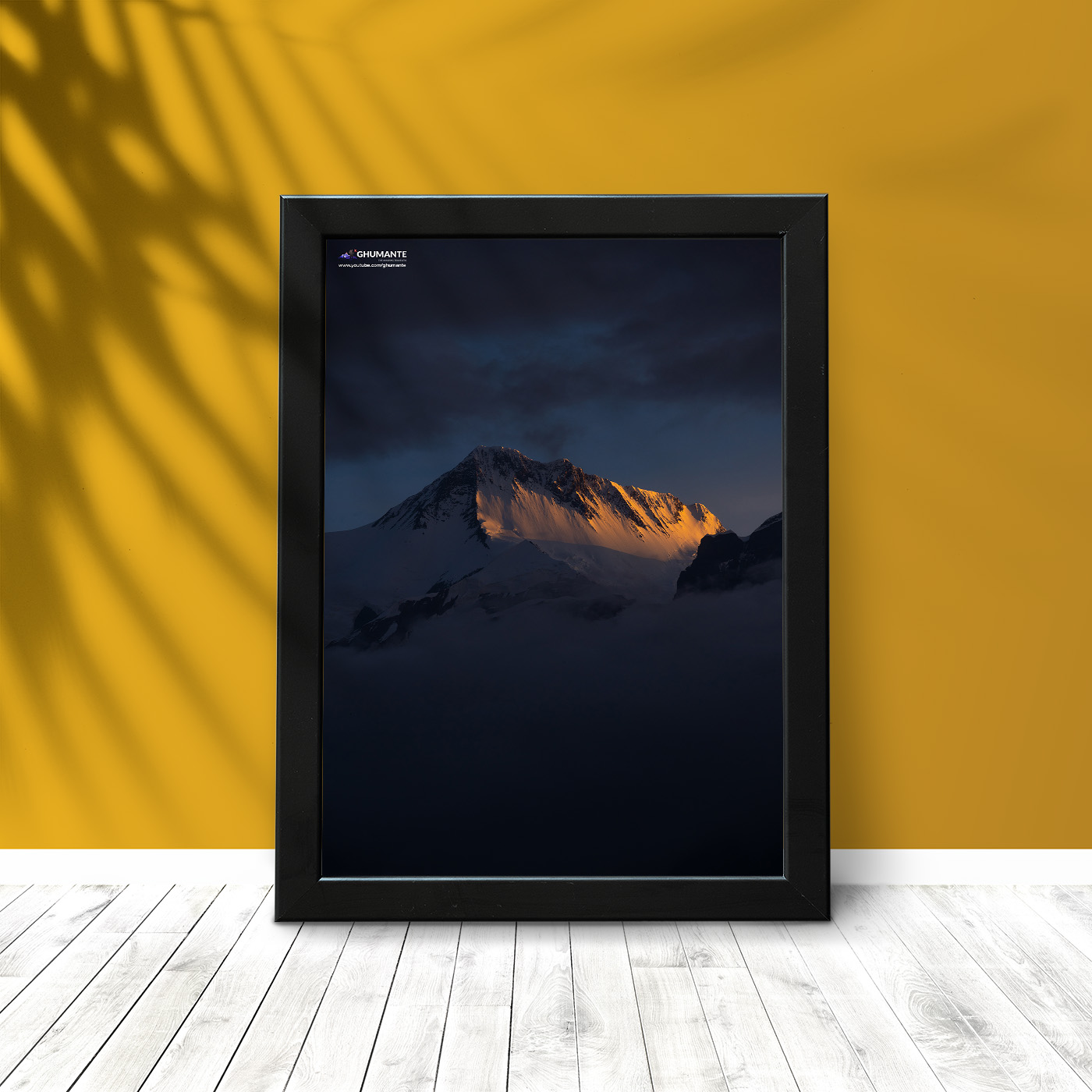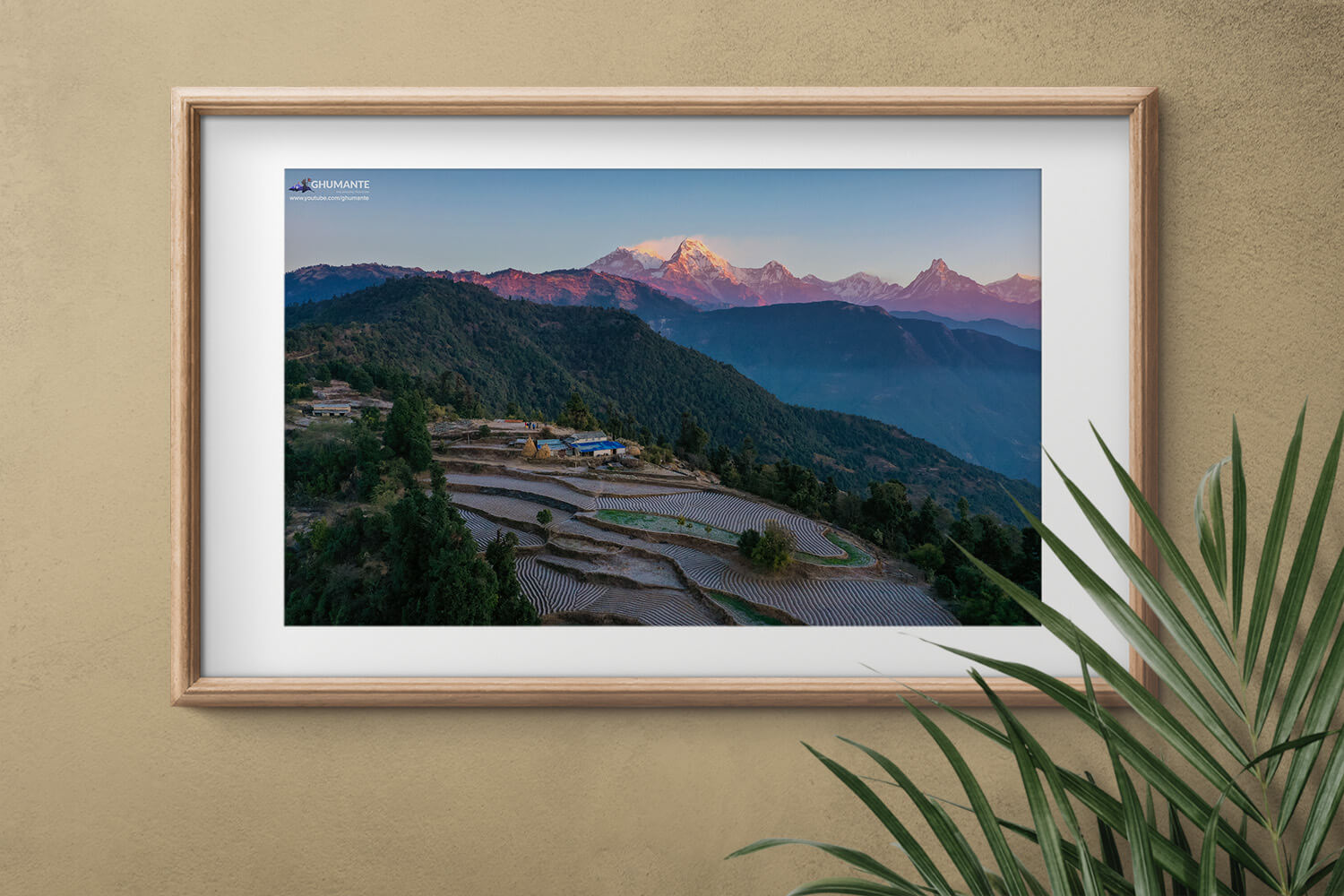
The Forbidden Kingdom!
After 4 hours of bumping our heads and bodies inside the jeep from Chhusang, the three of us were finally in the Lo-Manthang Village, Upper Mustang. The view that we witnessed from there made us completely forget about the tiring jeep ride.

We were afraid if it might rain but Driver Dai told us that the people of Upper Mustang get rain only two/three times last year. Then the most amazing thing happened. When we got out of the jeep, two snowflakes gently landed on my palm. I couldn’t believe what I saw. It was the first time I had ever felt the snow and it was amazing. But then it stopped. We later thought that maybe it was just a nice gesture, a warm welcome to the ‘The Forbidden Kingdom’.

Lo-Manthang was previously known as ‘Kingdom of Lo’ and was prohibited to Tourists until 1992, which has made it one of the most preserved regions in the world. The people here still speak their native Tibetan Languages and follow centuries old Tibetan Culture. With the growth of Tourism, people have learned to speak foreign Languages and have started hospitality businesses. They provide really good services to the people who travel to witness the beauty of Upper Mustang


Jigme Dorje Palbar Bista is the last official and current unofficial king of Mustang and is currently said to be in the Kathmandu Valley.
The locals are very friendly and we were very much happy with the hospitality provided. You might presume the lodging and fooding at such a remote place is surely expensive but guess what! It isn’t. It’s almost the same as Jomsom and a cheaper than Muktinath. People are all very kind and it was great to see smiling faces all the way.

Lo-Manthang just had a snowfall only a couple of days ago. During the sunrise the next day, we could see the morning sun-rays over the mountains covered with snow. We had seen nothing more majestic than this before. The horses were grazing on the field while the morning breeze blew through the golden plains.

This place is mostly famous for Buddhist Monasteries, King’s Palace and its varying landscapes.
After traditional Tibetan Breakfast in our hotel, we headed towards Chhoser Village, about 2-3 hours walk from Lo. On the way, we didn’t see much settlement but we saw plains, rocks covered with snow, mountains and ancient forts on the top of the hills.


After 3 hours of walk from Lo, we reached to Chhoser Village which was more remote than Lo. But the view was getting more and more majestic with every step. Chhoser Village is famous for Zhong Cave, Konjholing Cave and Buddhist Monastery.

Zhong cave is a special ancient architecture inside the rocks which is believed to be created before the Tibet War. During Tibet war people hid inside these caves.

The Tibetans were waiting outside without much worry thinking that they would eventually die and give up without water. But several days later, a girl bathed her hair with oil and The Tibetans fled thinking that there was water supply inside the cave. Zhong cave is almost like a 4 storey building inside the rocks. Inside the cave, there are different compartments like rooms to rest and chambers to store food and water. Another equally astounding cave, Konjholing Cave is a little smaller than the Zhong Cave.


The Nepal-China Border is about 1 hour bike ride away from Chhoser. You can rent a bike or horse ride to the border or return back to Lo. After spending a while in Chhoser and admiring the surreal beauty it boasts, we decided to return back to Lo. Dolma sister from the hotel became our guide to the Monasteries. She told us the history of Zhong Cave and Lo-Manthang.


The Head Monk of the Monastery told us that there used to be a big temple in the past where Lama(s) used to guard the dead body(of recently deceased) all night. Once during the ritual, a dead man came into life. If the ghost touched the Lamas, they would turn into a Ghost. So, they had to burn down the whole temple with all the people inside. After this incident, people created forts which were used to transfer messages from one place to the another from the top of the hills and hung Buddhist Prayer flags on the forts.

Later on, we visited the Monastery Museum which is inside Shree Mahakaruna Sakyapa Vidhyalaya (estd : 1994) which is Indo-Nepal Friendship Building. We couldn’t visit the King’s Durbar (Palace) as it was late and we had to return back to our hotel.

The next day, early in the morning, we left Lo-Manthang on a local Jeep for Chhuksang.
If you really are a travelling junkie and if you haven’t trekked much, then this is your perfect destination. The overall expense is around 10-12k for a 4 nights/5 days trip which covers Jomsom-Muktinath(Night)-Kagbeni-Chhuksang-LoManthang(Night)-Chosser-LoManthang(Night)-Chuhuksang-Jomsom(Night) if you prefer to travel on public vehicles(jeep/bus).

[author] [author_image timthumb=’on’]https://scontent.fbkk2-1.fna.fbcdn.net/hphotos-xpt1/v/t1.0-9/11707643_1037739642904292_1620120392471521660_n.jpg?oh=bd97c7a82636ebac42fbf2e2108e348b&oe=56F6C723[/author_image] [author_info]Gaurav Dawadee is just another Ghumante from Pokhara with a Nikon trying to show you how beautiful Nepal is, with the photographs. Learning everyday.
[/author_info] [/author]
Comments
















8 Comments
A.P Tolang
its really beautiful place. wish to travel soon there…
Specially thanks Mr. Gaurav Dawadee to Expose heavenly Place of Nepal.
Gaurav Dawadee
Thank you very much A.P. Tolang Ji. Appreciate it. Stay tuned in Ghumante for more.
Udhabkc
Fascinating story. Never seen this much of images and story before on Upper Mustang.
Cheers!
Gaurav Dawadee
Thank you so much Udhab Ji. Im really glad you liked it. Cheers!
Rabina
Good Job Brother! 🙂 🙂
Gaurav Dawadee
Thank you so much Sister. Stay Tuned 🙂
BISHWO
Wa wa kya baat hey
Gaurav Dawadee
Thank you sir 🙂